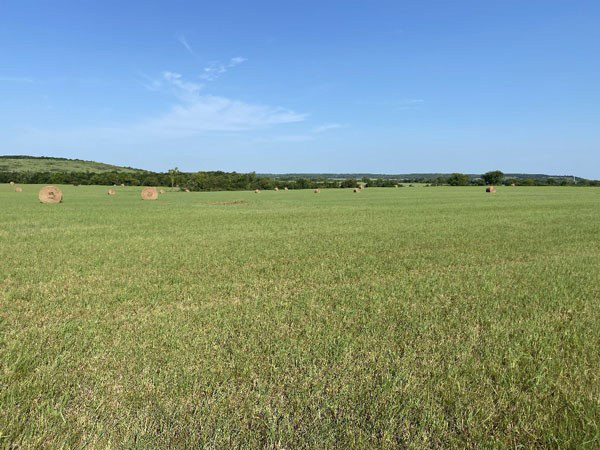Management options during the establishment phase
Overgrazing and weed control are the two most important management considerations during establishment. Depending on stand establishment, grazing should be avoided during the first and possibly the second growing season. Especially consider limiting grazing and cutting pressure in stands that are slow to establishment due to limited rainfall. Short periods of grazing (flash grazing) for weed control early in the first growing season are encouraged to stimulate tillering in the new seedlings. For example, graze for 1 day with enough animals to remove the weeds without damaging the grass seedlings.
Haying during the year of seeding may be beneficial if enough forage is produced, but setting the mower to at least 4-inch height will ensure that the plants can readily regrow. As a general rule, hay most native species after the first week of July. This will allow the plants to develop tiller buds for the following year and build reserves for early growth.

Figure 1. Native prairie a few weeks after hay harvesting. Photo: B. Pedreira, K-State Research and Extension.
Weed control
Weed control helps reduce competition for moisture, nutrients, and sunlight in new seedings. When weed control is necessary, the main methods are mowing and herbicides. Dense shade created by annual grasses is the greatest concern, the most commonly encountered are downy brome, Japanese brome, crabgrass, and foxtail. Weed control is most beneficial during May and June with little benefit in August. Preplant or preemergence herbicides are labeled for some species and situations. Consider using an herbicide wipe-on applicator if weeds are 6 inches taller than the desirable grass or spot spray if the weeds are not spread throughout the whole field. Consult the K-State 2025 Chemical Weed Control for Field Crops, Pastures, Rangeland, and Noncropland (bookstore.ksre.ksu.edu/pubs/CHEMWEEDGUIDE.pdf) for current herbicide recommendations for products, rates, and timing.
Mow before weedy plants produce seeds. Generally, broadleaf weeds should be mowed before they are 8 inches tall. Annual grasses should be mowed to prevent seed production. Herbicides may be used to reduce annual or perennial broadleaf weeds after the grass plants have become established. Consult the label for application restrictions and instructions.
Chemicals must be federally and state registered. They also must be applied in accordance with authorized registered uses, directions, and cautions on the label and all other federal and state policies and requirements.
Management options after establishment
After establishment, seeded areas should be managed to promote tillering and to keep the soil covered. A great forage stand reduces erosion and runoff, minimizing soil loss, providing high forage production, and improving wildlife habitat.
New stands must be grazed following appropriate stocking rates, good grazing distribution, and proper season of use. Proper management of a seeded grass stand is a must with the investment of time, money, and labor involved in establishing it. Stocking rate information can be found in MF1118.
Haying should be done in early July to harvest the highest combination of forage accumulation and nutrient value. A minimum cutting height of 4 inches is recommended to ensure plants have adequate opportunity to regrow and build reserves for the following season.
Prescribed burning should be done in late spring, just as the seeded grasses are starting to grow (less than 1½inches). Burning at this stage stimulates tillering, removes the last year’s dead forage, and increases forage quality. Prescribed burning can be done as early as one growing season after seeding. This burning is not suggested for cool-season forages.
This article originated from the recently released KSRE publication Establishing Native Grasses (MF2291) and can be viewed online at bookstore.ksre.ksu.edu/pubs/MF2291.pdf
Tina Sullivan, Northeast Area Agronomist
tsullivan@ksu.edu
Bruno Pedreira, former Southeast Area Agronomist
Walt Fick, Professor Emeritus – Range Management
Tags: grazing pastures native grasses